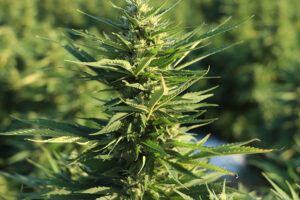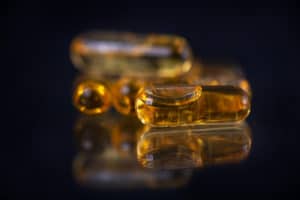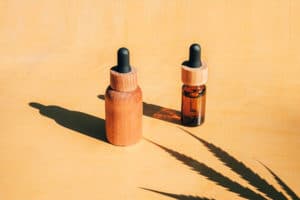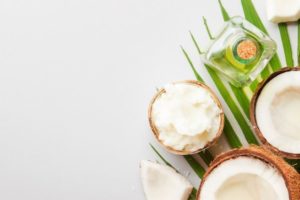CBD has helped an increasing number of people achieve their health and wellness goals. It is generally safe to consume and shows no potential for drug dependency, making it a better treatment option than conventional medications. Moreover, CBD offers a wide range of health benefits against pain, anxiety, stress, and several other conditions.
However, most people who are new to CBD have no clue about how its bioavailability can influence the way their body reacts to this magic plant compound. For you to experience the therapeutic benefits of CBD, it has to interact with the endocannabinoid system of your body. Therefore, a specific amount of CBD must be present in your blood so that it can bind to cannabinoid receptors in the muscle and organ tissues.
If you have ever felt like CBD is not working for you, there is no need to worry. There are CBD products out there that are not readily absorbed by the body, and there might be a chance that you have used them. To make sure that this does not happen in the future, you must understand how much CBD you are getting from a product.
This article entails everything you need to know about the bioavailability of CBD. We will be looking at some of the delivery methods and how each is suitable for you. You will also learn about the factors that influence CBD absorption and how you can tweak them to your benefit.
Let’s dive right into it!
What Is Bioavailability?
Don’t get worried! Bioavailability is just a fancy, sciency term for the amount of CBD that can reach your system after you have taken it. Once the CBD has entered your bloodstream, it has to remain in circulation for some time so that it can distribute itself to your organs and muscle tissue, where it is needed.
If the concentration of CBD absorbed into your bloodstream is relatively low, the therapeutic effects that you are looking to get will not be as intense.
Generally, people who are new to CBD have doubts about its benefits. Why? Because they are consuming their CBD through a delivery method that results in lower amounts of the product ending up in their system.
Well, this does not mean that you should stop exploring CBD for its therapeutic benefits. Instead, what we recommend is learning how you can control the bioavailability of CBD for greater effectiveness.
CBD and Its Bioavailability – What You Should Know?
CBD has become very popular among people who are seeking alternative approaches when it comes to medical treatment. Today, several CBD companies offer water-soluble products with high bioavailability. But how will you determine which CBD product is most suitable for you?
Well, there is some science behind the bioavailability of CBD oil and how CBD generally interacts with our body. To get a better idea about this process, here are a few things that you need to understand before choosing a CBD product that suits you best:
Metabolism
The bioavailability of CBD usually depends on how fast your body is breaking down the product and absorbing CBD into your bloodstream. Metabolism refers to the mechanism through which this happens. If your metabolism is very high, it usually means that all the processes involved in getting CBD into your system happen much quicker.
Is this good for you? Well, not really. Although metabolism is a vital process, it can sometimes affect the rate of CBD absorption, decreasing optimal levels. If you consume CBD orally, your liver metabolizes a large concentration of it before the product can enter your bloodstream and disperse where needed.
A CBD product that offers high bioavailability will overcome the digestion process and escape metabolism from the liver, directly entering your bloodstream and interacting with organ tissues before leaving the body.
Absorption of The Compound
By now, you must have noticed that the bioavailability of CBD is synonymous with its capability to get absorbed. Cannabinoids like CBD and THC are plant-based compounds that are insoluble in water. Such compounds are known as lipophilic (fat-loving) molecules, and they mix well with fatty substances such as MCT, olive, and other oils.
Cannabinoids usually have very low bioavailability when administered orally, mainly because our bodies are 70% water, and this makes absorption of CBD less efficient.
Distribution
It does not matter whether you are taking CBD oil for anxiety, stress, or pain relief. If the product does not disperse into your body, you will not be able to relieve symptoms effectively and experience the healing properties of CBD.
A CBD product with high bioavailability will distribute its molecules evenly throughout the body. If you are targeting a specific area or muscle, the chances of CBD reaching it through oral consumption are very low. So, exploring other delivery methods such as transdermal and intranasal is a better idea in such cases.
Excretion
We mentioned before how CBD is metabolized in the liver when you take it orally. The body eliminates byproducts of metabolized CBD through the kidneys, further reducing the little amount that reaches the blood.
If you are using a CBD product with higher bioavailability, nothing goes to waste. Rather than being cleared rapidly from your system, the CBD will be absorbed and distributed throughout the body.
CBD Delivery Methods – Types, Pros, and Cons, etc.
The delivery method you chose greatly influences the bioavailability of CBD and how it gets absorbed into your body. There are several ways to consume CBD, and each can have varying effects on your body.
You can choose between oral consumption methods that include edibles and gummies, transdermal applications like topicals and beauty products, inhaling CBD, and much more. Here we will be exploring some conventional delivery methods of CBD and how each:
Oral Consumption – Gummies, Edibles, etc.
Many people are already familiar with this method since it is similar to eating food, drinking a beverage, or swallowing a pill. While oral consumption might be the most common delivery method, it certainly is not the most effective. The bioavailability of ingested CBD is roughly 10-20% and sometimes can be as low as 6%.
Why is this value so low? Well, we mentioned before that CBD must go through your digestive tract, after which the liver metabolizes it. Both these processes take a lot of time, and a significant amount of CBD goes to waste during the process. Hence, you might not experience the therapeutic effects as vividly as you would if you used any other delivery method.
While the low bioavailability of oral CBD might be alarming, there are some advantages of using this delivery method as well. A small animal study conducted to analyze the mean residence time of CBD in our body showed positive results. If you are taking CBD orally, it stays in your system longer than usual.
Transdermal CBD
In addition to oral consumption, a different means of administering CBD into your body is using topicals and transdermal patches on the skin. The peripheral nervous system in our skin has tons of endocannabinoid receptors that interact with CBD. If you want to target a specific region of your skin for pain relief or inflammation, then transdermal CBD is the way to go.
Applying topicals to the skin means that you are only activating receptors in that specific area, and little to no CBD will end up in your bloodstream. So, CBD may not work for you this way, especially if you are looking to relieve symptoms of conditions that are associated with the central nervous system. These include stress, anxiety, PTSD, ADHD, etc.
To make sure you are getting enough CBD through transdermal administration, knowing the correct way to apply it to your skin is crucial for you to increase its effectiveness in alleviating symptoms. The skin acts as a barrier against foreign particles and harmful substances. It is generally porous, and CBD does get absorbed adequately through the skin. However, you must be generous with the amount of CBD topical you are applying to the affected, ensuring maximum absorption.
Although we do not know the exact numbers when it comes to the bioavailability of transdermal CBD, it should be lower than sublingual or inhalation methods. Today, CBD brands are trying to come up with topicals that offer high bioavailability, and one study has shown that rectal or vaginal application of CBD topicals increases the bioavailability of CBD up to 13.5%
Inhaling CBD – CBD Strains and Vapes
Inhaling CBD is a popular way to consume its therapeutic benefits since it does not have to pass through your digestive system and escapes metabolism from the liver. Instead, CBD enters the bloodstream directly through thin membranes in the air sacs in your lungs.
There are two ways you can inhale CBD. These include:
Smoking
Smoking is popular with people who are trying out cannabis products recreationally. If you are smoking a CBD-rich strain, the bioavailability of CBD will be much higher (almost 31%) as it is entering directly into your blood.
However, smoking has some health risks associated with it. The combustion of plant compounds produces byproducts that can damage or irritate your airways.
Vaping:
With the stigma against smoking on the rise, you must have seen people using vapes or e-cigarettes nowadays. Well, you can vape CBD too! All you need is the right CBD vape product and a good vape pen.
Vaping allows you to inhale CBD oil that passes through a heating element and turns into vapors inside a cartridge known as a vape pen. The risks with vaping are lesser than smoking, and the bioavailability is pretty similar. So, you should try this delivery method.
Sublingual CBD – Tinctures and Drops
There are mucous membranes in our mouth and nose that can directly absorb CBD into your bloodstream, allowing it to bypass your digestive system and evade the liver.
One way of administering CBD sublingually is placing a few drops under your tongue and waiting for at least 15 seconds for it to absorb into the membranes. The longer you hold the CBD underneath your tongue, the more absorption will take place.
You can choose between nasal and oral CBD sprays too. These products have a similar bioavailability as sublingual drops, and they produce peak CBD levels for almost 4.6 hours.
Injecting CBD – Intravenous Administration
We do not recommend injecting CBD on your own as it is a complicated process and requires supervision from a medical professional. However, administering CBD through injections ensures maximum or 100% bioavailability, as no CBD content goes to waste because of digestion or metabolism.
One thing that changes is the mean residence time of CBD in your system. CBD stays for a shorter period in your system if you are injecting it.
Can I Increase The Bioavailability of CBD Oil?
Theoretically, you can not increase the bioavailability of CBD in your system. However, choosing methods with a high bioavailability can ensure that you are getting the maximum therapeutic benefits.
All the mechanisms involved in the absorption and excretion of CBD is known as pharmacokinetics. Understanding the factors that influence CBD pharmacokinetics can help you control them for your benefit. Here are a few things you need to keep in mind:
Dosage
Taking a higher dosage of CBD is a suitable way of ensuring that the final concentration that reaches your blood is more than usual. Increasing the dose of oral CBD can double or sometimes even triple absorption into the blood.
However, this does not mean that you can take as much CBD as you like. After a specific threshold dose, the absorption rate seems to become uniform and does not increase further.
Health
Your health condition can have a significant impact on how your body metabolizes and breaks down CBD. The liver plays a significant role in preventing higher amounts of CBD from reaching your blood. If your liver function is impaired, the bioavailability of CBD is bound to increase. A recent study showed that people with moderate or low liver impairment had greater levels of CBD as compared to those who did not.
Hence, more CBD reaches your system and stays in circulation long enough for you to experience its therapeutic effects.
Taking CBD With or Without Food
Taking CBD with food as compared to on an empty stomach vastly increases its final concentration that reaches your blood. CBD is a fat-soluble compound, so pairing it with healthy fats such as omega-3s, fish oils, and nuts is a good idea. The CBD dissolves into the food particles and is absorbed more easily.
Heat Processing Reduces Peak CBD Levels in A Product
While some people say that heating activates the cannabinoid content in a product, others believe that heating reduces the peak levels of CBD by four times. Nevertheless, we recommend taking your CBD as mentioned on the label. Do not heat anything!
Piperine and CBD Bioavailability
Piperine is a compound found in black pepper. It is known for boosting the absorption capabilities of your body by stimulating transporter molecules. These molecules are responsible for moving CBD between membranes and into your bloodstream.
Pairing CBD with piperine saw six times higher concentrations of CBD ending up in your blood as compared to other products.
Bottomline
There is still a need for more evidence to get a better idea of how bioavailability works with CBD. Most of the studies conducted are based on animal models, so the comparison is a little off the charts.
However, it is important to know that you can actually control the amount of CBD that is ending up in your bloodstream. Choosing the right delivery method and understanding simple factors such as dosage or health can really help you make that decision.
Nevertheless, if you have made that decision and want to try some of the best CBD brands in the market now, visit our shop and get started!
FAQs on CBD Bioavailability
Question: Is CBD Oil Bioavailable?
Answer: Yes, inhaled CBD is typically 31% bioavailable. This can change based on what kind of delivery method you are using.
Question: How do you increase the bioavailability of CBD Oil?
Answer: It is not possible to increase the bioavailability of CBD Oil from a given delivery method, but you can always choose methods and products that offer a high bioavailability. There are a few factors ranging from health, dosage, metabolism, and absorption that can influence bioavailability.
Question: How is CBD best absorbed?
Answer: CBD is best absorbed by inhaling, sublingual consumption or nasal consumption. There are thin membranes present in your lungs, underneath the tongue, and in your nose, that is directly linked with blood vessels.
Question: Which is better CBD Oil or water-soluble CBD?
Answer: CBD oil is generally fat-soluble so it will not absorb into your blood as efficiently as a water-soluble product will do. However, taking CBD oil with fatty substances can increase absorption rates.









